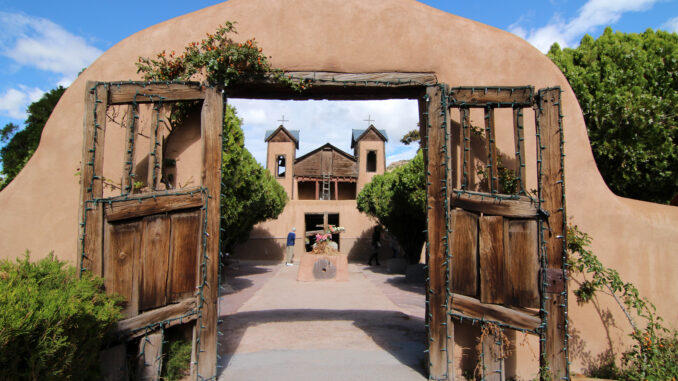
El Santuario de Chimayó, located in northern New Mexico, is one of the most significant Catholic pilgrimage sites in the United States. Designated a National Historic Landmark, it draws over 300,000 visitors annually — not only for its religious significance, but also for its historic architecture, cultural depth, and striking Southwest landscape.
This guide offers everything you need to know about photographing this remarkable place — when to go, what to bring, what to shoot, and why it matters. For travel photographers, Chimayó offers a rare opportunity to create work that is both visually compelling and culturally meaningful.

Where is Chimayó Located?
Chimayó is located approximately 30 miles north of Santa Fe, New Mexico, in the foothills of the Sangre de Cristo Mountains. The sanctuary is situated just off the High Road to Taos, a scenic and culturally rich route that winds through historic villages, artist communities, and dramatic landscapes. The site is fully accessible by paved roads, with parking available nearby. The sanctuary remains open year-round and there is no admission fee.
Why is El Santuario de Chimayó Historically Important?
Constructed between 1813 and 1816 by Don Bernardo Abeyta, a member of the Penitente Brotherhood, El Santuario de Chimayó was built on land believed to be sacred. The sanctuary was dedicated to Our Lord of Esquipulas, a Christ figure associated with healing, and quickly became known for its “holy dirt,” found in a small room attached to the main chapel.
The healing earth and miraculous associations have made Chimayó a major pilgrimage site. Its origins predate European settlement, with Tewa-speaking Native communities also regarding the area as spiritually significant. Over time, the site evolved into a space of shared belief, where Indigenous and Catholic practices intersect.
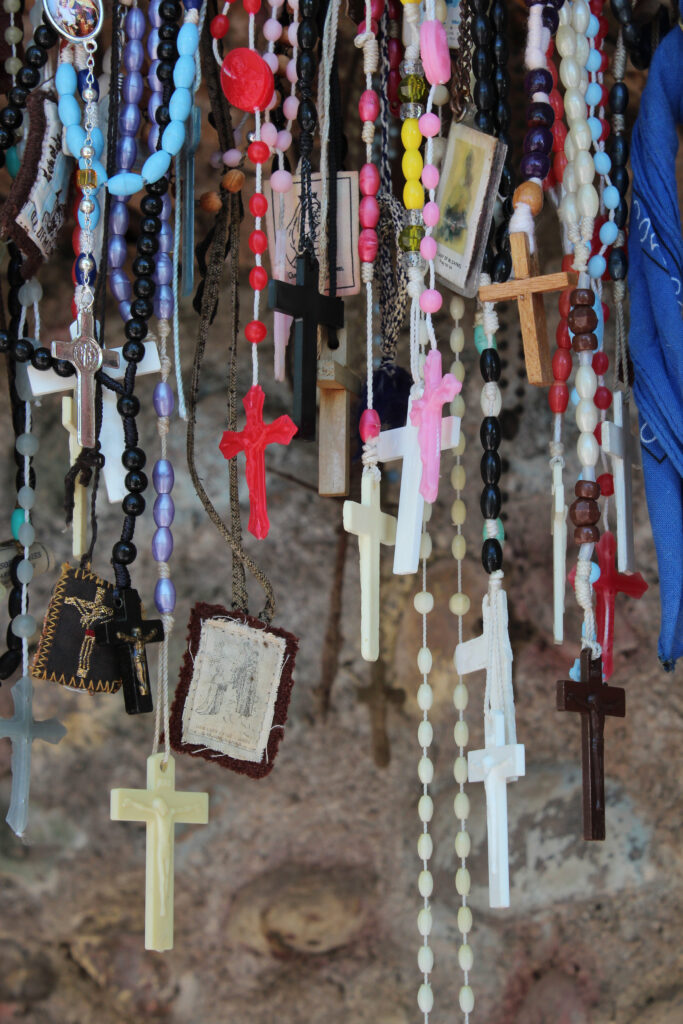
Why Photograph Chimayó?
Photographers drawn to the intersection of faith, architecture, and place will find Chimayó uniquely rewarding. The church’s adobe walls, hand-carved wooden doors, and twin bell towers reflect the Spanish Colonial aesthetic that defines much of northern New Mexico’s historic architecture. The natural light plays beautifully against the texture of the adobe, especially during golden hour.
Beyond the architecture, Chimayó is rich with human stories. Pilgrims walk for miles — particularly during Holy Week — to reach the sanctuary. Devotional objects such as crutches, rosaries, candles, and handwritten prayers fill the chapel and its surrounding spaces, creating opportunities for respectful, emotionally resonant storytelling through photography.
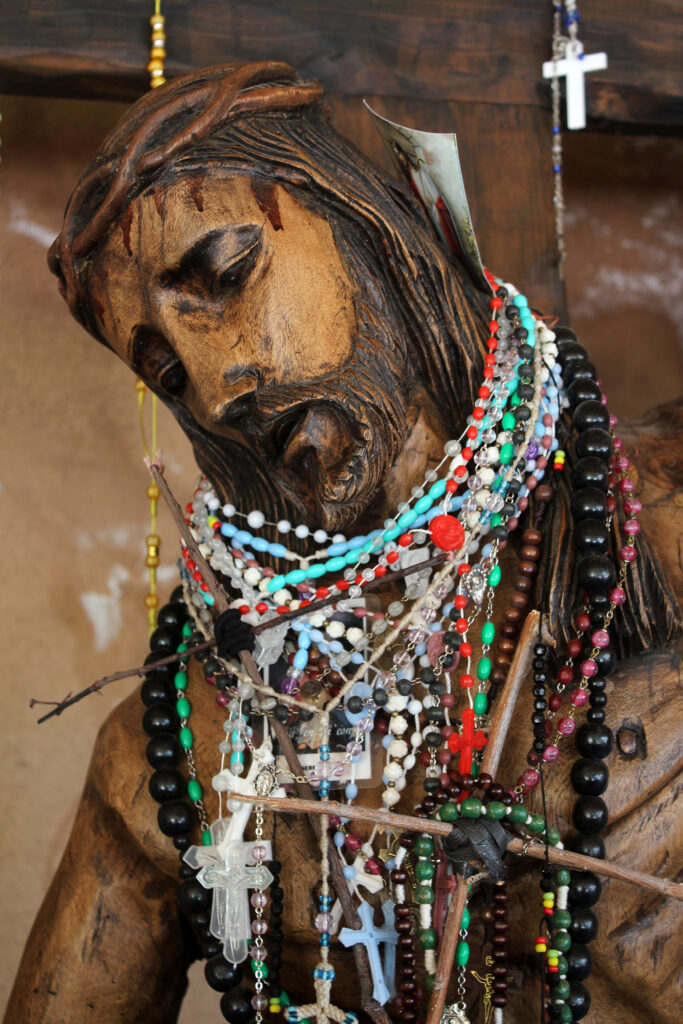
When to Photograph
The pilgrimage season around Easter — particularly on Good Friday — is one of the most compelling times to document Chimayó. Tens of thousands of pilgrims walk from all directions, some traveling nearly a hundred miles on foot. This is a powerful time for documentary work, but it is also very crowded and requires discretion and sensitivity.
Fall is another excellent time for photography at Chimayó. The light is warm, the landscape is colorful, and the crowds have decreased. In winter, the sanctuary takes on a quiet, austere quality that works well for more meditative or architectural photography. Snowfall adds contrast to the adobe walls and can transform the visual mood of the scene.
Golden hour provides optimal conditions for photographing the church exterior. Morning light illuminates the eastern façade, while late afternoon emphasizes shadows and textures on the adobe surfaces.
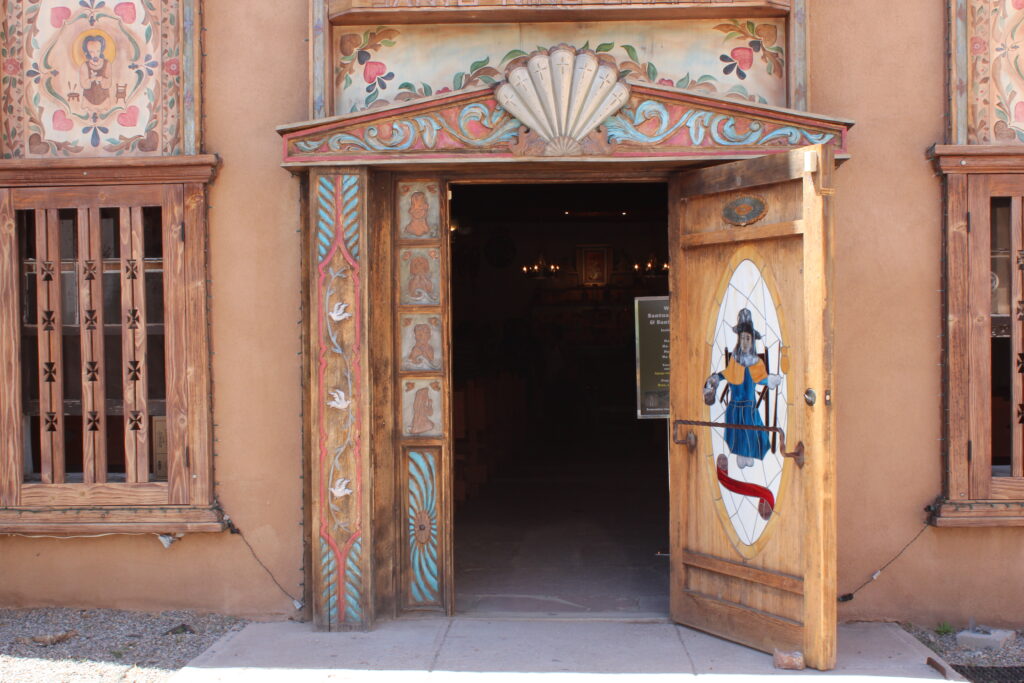
What to Photograph
Photographers often begin with the exterior of the church, focusing on its symmetrical front façade, arched wooden gate, and the cross-topped towers. The surrounding adobe walls, courtyards, and footpaths provide strong leading lines and framing opportunities.
Inside, the chapel is filled with visual details — hand-carved altars, retablos, and flickering votive candles. The small room containing El Pocito, the hole in the ground from which pilgrims take healing earth, is especially photogenic, lined with tokens of faith left behind by visitors. Do note that photographing inside the sanctuary is often restricted or discouraged during services. Always ask for permission and avoid flash.
During Holy Week, the roads leading into Chimayó fill with pilgrims. Some walk in groups, others pray quietly along the roadside, and many carry symbolic items as expressions of faith. These moments are best photographed with a documentary mindset: quiet observation, a long lens, and careful attention to context.
In the village, you’ll find traditional weaving studios, rustic chapels, and roadside shrines. The broader High Road to Taos also offers additional stops, including San José de Gracia Church in Las Trampas and the artistic community of Truchas.
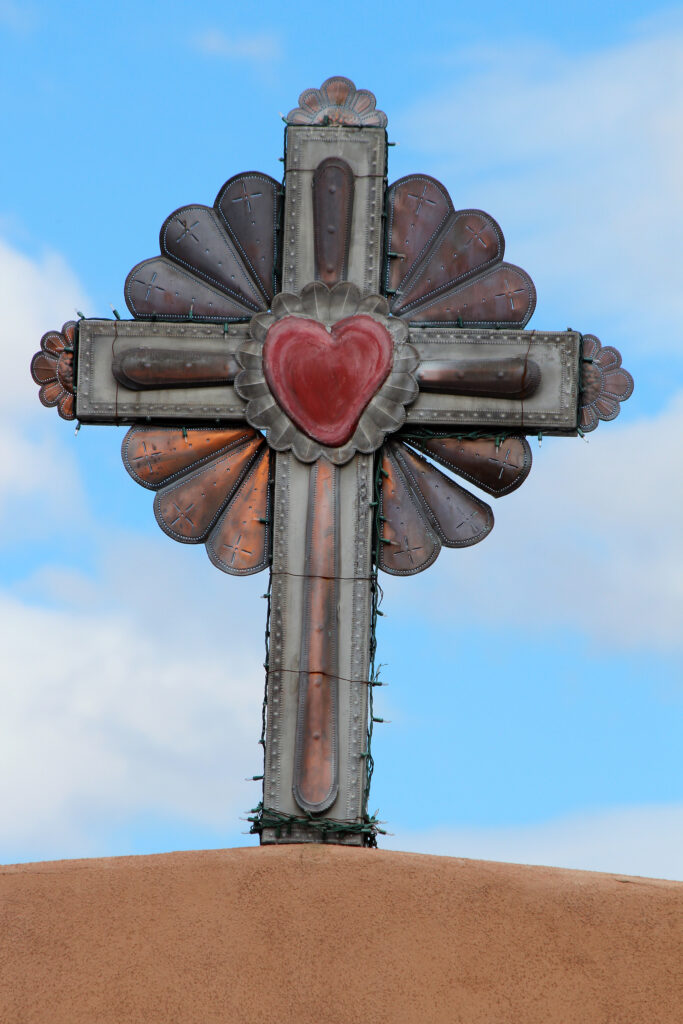
Recommended Gear for Photographing Chimayó
A lightweight DSLR or mirrorless camera body with strong low-light performance is ideal, especially for interiors with limited available light. A wide-angle lens (16-35mm) works well for architecture, while a standard zoom (24-70mm) offers flexibility for capturing people, details, and spontaneous moments. A telephoto lens (70-200mm) is useful during Holy Week when photographing pilgrims from a respectful distance.
Tripods may not be permitted indoors, but a small travel tripod can be helpful for dawn and dusk images outside. A circular polarizer is recommended for cutting glare off the adobe walls and enhancing skies. Pack extra batteries and memory cards, especially if you’re planning to photograph sunrise to sunset, as facilities are limited.
Wear neutral, respectful clothing, particularly during religious observances, or if you’re planning to photograph inside or near services.
Etiquette and Permissions
El Santuario de Chimayó is an active place of worship. Discretion is critical. Photography may not be allowed inside the chapel, especially during Mass or Holy Week events. Always ask an attendant or church volunteer before taking interior photos.
Never use flash inside the church, even if allowed, and avoid interfering with individuals in prayer or reflection. If you plan to photograph people, especially pilgrims or locals, obtain verbal permission and respect their wishes if declined. Drones are strongly discouraged in and around the site out of respect for the sanctuary’s spiritual nature and the privacy of the community.
Consider leaving a small donation in appreciation if you’re photographing the grounds.
Local artisans nearby often welcome photography in their shops — support them by buying something if you can.
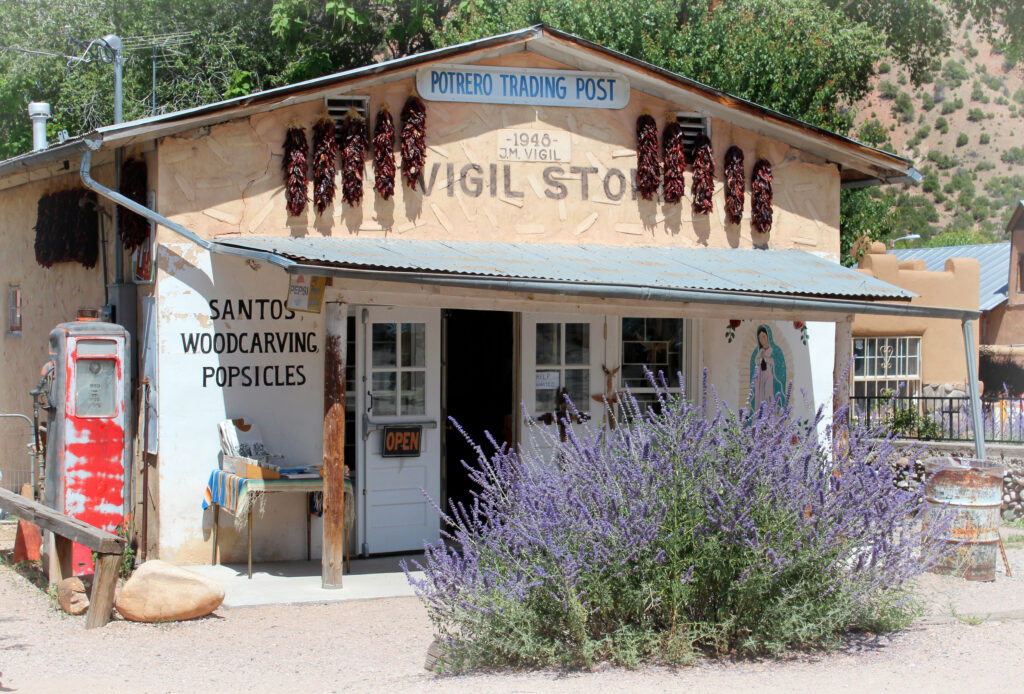
Additional Locations to Consider
Photographers traveling to Chimayó may want to explore the surrounding region for additional subjects. The San José de Gracia Church in Las Trampas is another well-preserved adobe church along the High Road to Taos. Santa Cruz Church in nearby Española offers additional architectural interest. Landscapes around Ghost Ranch, made famous by Georgia O’Keeffe, and galleries along Santa Fe’s Canyon Road also provide strong visual content.
Capturing More Than a Place
Photographing El Santuario de Chimayó is about more than capturing a beautiful structure — it’s about tapping into a deeper narrative of faith, endurance, and place. Whether you’re working on a long-term documentary project or building a portfolio of spiritual and historic sites, Chimayó presents an opportunity to photograph a location that asks for quiet reverence. Approach with respect, curiosity, and patience, and you’ll come away with work that is both visually compelling and culturally meaningful.
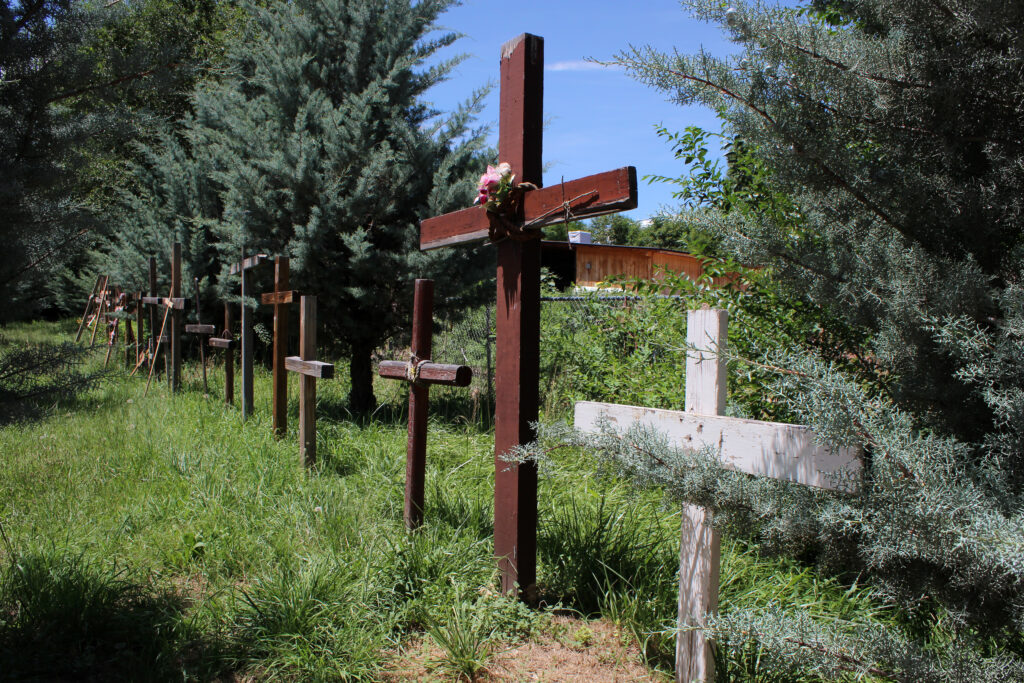
Practical Information
Address: 15 Santuario Dr., Chimayó, NM 87522
Coordinates: 35.9923° N, 105.9344° W
Nearest City: Santa Fe, New Mexico (30 miles south)
Planning to photograph Chimayó? Share your images or questions in the comments — or tag us on social media to show how you capture this extraordinary site.
